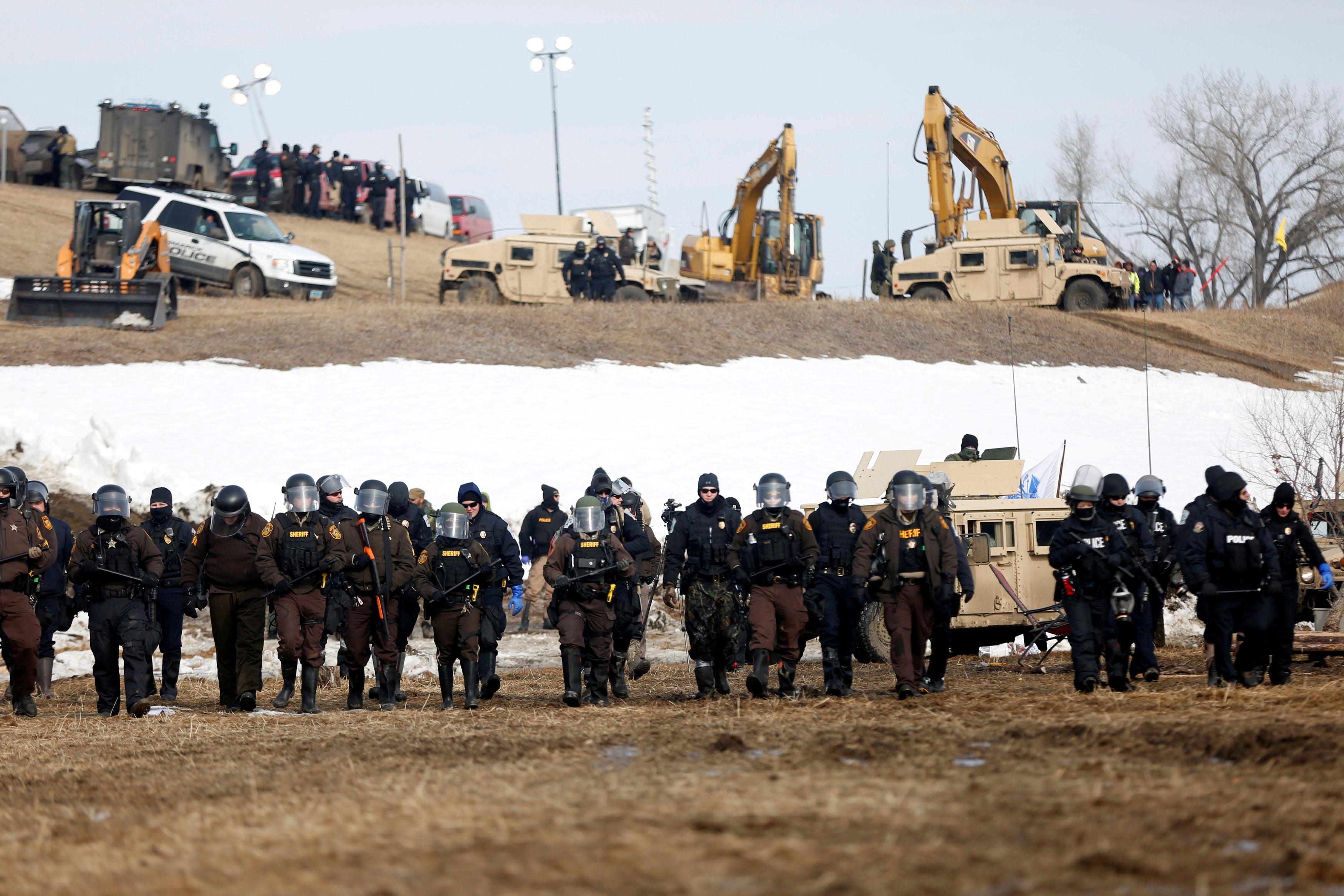What is the Dakota Access Pipeline and where does Biden stand on it?
- What is the Dakota Access Pipeline?
- Why is the Dakota Access Pipeline controversial?
- What happens next?

Your support helps us to tell the story
From reproductive rights to climate change to Big Tech, The Independent is on the ground when the story is developing. Whether it's investigating the financials of Elon Musk's pro-Trump PAC or producing our latest documentary, 'The A Word', which shines a light on the American women fighting for reproductive rights, we know how important it is to parse out the facts from the messaging.
At such a critical moment in US history, we need reporters on the ground. Your donation allows us to keep sending journalists to speak to both sides of the story.
The Independent is trusted by Americans across the entire political spectrum. And unlike many other quality news outlets, we choose not to lock Americans out of our reporting and analysis with paywalls. We believe quality journalism should be available to everyone, paid for by those who can afford it.
Your support makes all the difference.What is the Dakota Access Pipeline?
The Dakota Access Pipeline, or DAPL as it's known, runs for more than 1,100 miles from North Dakota to Illinois and has been operating since June 2017. It carries approximately 570,000 barrels of crude oil each day.
The $3.8 billion project crosses beneath Lake Oahe, a reservoir along the Missouri River. The crossing is just north of the Standing Rock Sioux Reservation which straddles the North Dakota-South Dakota border. Eight other pipelines already run under the lake at varying depths.
Why is the Dakota Access Pipeline controversial?
The Standing Rock Sioux tribe and environmental organizations say the construction and size of DAPL has put the reservation’s only supply of drinking water at risk of oil spills and environmental pollution, as well as threatening sacred sites.
Opponents also criticize the expansion of a vast fossil fuel project amid the global race to reduce planet-heating emissions and prevent climate breakdown.
Pipeline supporters say it would create nearly 8,000 jobs, albeit temporary ones. Texas-based pipeline owner Energy Transfer maintains that the pipeline is safe.
In 2016, the tribe filed a lawsuit in an attempt to stop construction. The pipeline site was the subject of large, months-long protests in 2016 and 2017 during its construction.
The Obama administration originally rejected permits for the project and the U.S. Army Corps of Engineers, which is responsible for evaluating and issuing permits for all water crossings of the pipeline, prepared to conduct a full environmental review.
After Donald Trump took office in 2017, the agency scrapped the review and granted permits, concluding that running the pipeline under the Missouri River posed no significant environmental issues.
The pipeline began operating in June 2017. The Standing Rock Sioux continued to press legal challenges against the pipeline even after it began carrying oil.
In April 2020, US District Judge James Boasberg ordered further environmental study after determining the Corps had not adequately considered how an oil spill under the Missouri River might affect Standing Rock’s fishing and hunting rights, or whether it might disproportionately affect the tribal community.
The pipeline has been allowed to continue to operate while the legal challenges roll on.
EarthJustice, the legal nonprofit representing Standing Rock and other tribes, says that President Biden has the discretion to shut the pipeline down, and last month, the leaders of the Standing Rock Sioux Tribe, Cheyenne River Sioux Tribe, Oglala Sioux Tribe, and Yankton Sioux Tribe wrote to the president asking him to do so.
What happens next?
On 9 February, 2021, Judge Boasberg agreed to push back a hearing about whether DAPL should be allowed to continue operating without a key permit while the Corps conducts an environmental review on the project.
The Corps filed a motion on 8 February to postpone the hearing in order to allow Biden administration officials more time to familiarize themselves with the case, including the 2016 lawsuit filed by the Standing Rock Sioux Reservation.
The judge reset the hearing for April 9. Neither the tribes nor the pipeline owner objected to the delay.
The judge said he wants the Corps to explain how it “expects to proceed” without a federal permit granting easement for the pipeline to cross beneath Lake Oahe.
This week, celebrities including Leonardo Di Caprio and Jane Fonda, along with environmental and indigenous groups sent a letter to Joe Biden and Kamala Harris urging them to shut down DAPL. A 93-mile relay run was also being conducted by Standing Rock youth to put pressure on Mr Biden to take action.
The president has taken a number of executive actions against the fossil fuel industry since taking office including shutting down the Keystone XL pipeline but has made no public comment on DAPL. VP Harris added her name to an amicus brief in support of tribes last May, which called for the pipeline to be shut down while environmental assessment took place.
Join our commenting forum
Join thought-provoking conversations, follow other Independent readers and see their replies
Comments